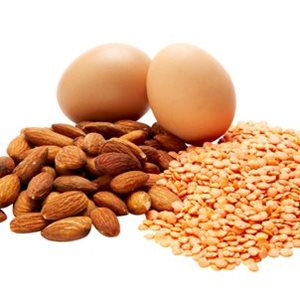 notes that consumers in the developed world generally get enough protein, the trend is being largely driven by concerns relating to weight management, as well as an increased interest in sport performance products which are now readily available in the mainstream market.
notes that consumers in the developed world generally get enough protein, the trend is being largely driven by concerns relating to weight management, as well as an increased interest in sport performance products which are now readily available in the mainstream market.Another trend that Innova sights is the increased interest in the Paleo diet which focuses on lean protein and is designed to mimic the diet of our Palaeolithic ancestors.
With this in mind, Lu Ann Williams, director of innovation at Innova Market Insights, says that now is the time for food manufacturers to innovate in order to secure a piece of the protein pie.
Williams cites a number of drivers, including the need to feed a growing global population, an alarming rise in sarcopenia (declining muscle mass, particularly among an aging population), and the economic and environmental costs of existing protein sources.
“Proteins have diverse application potential, with opportunities for alternative vegetarian options, and new protein sources – such as microalgae – alongside existing and novel dairy-based and vegetable sources, such as soy, beans and grains,” she says.
The data indicates that close to three percent of global food and beverage launches over the past 12 months ending 31 March 2014, were marketed as “high protein” or “source of protein”.
The report also states that demand in Asian markets for whey protein has soared as a result of its rising popularity as a natural, healthy ingredient within the infant nutrition, mediacla nd sports markets.
Vegetables still top the list for the number of published protein patents in food and drinks over the period, and whey has risen from eighth position in 2012 to third position in 2013.
At the same time, the number of nut and seed protein patents has also risen sharply, from single figures in 2012 to more than 200 in 2013. Strong activity has also been observed in patent actions relating to algae-derived proteins.





